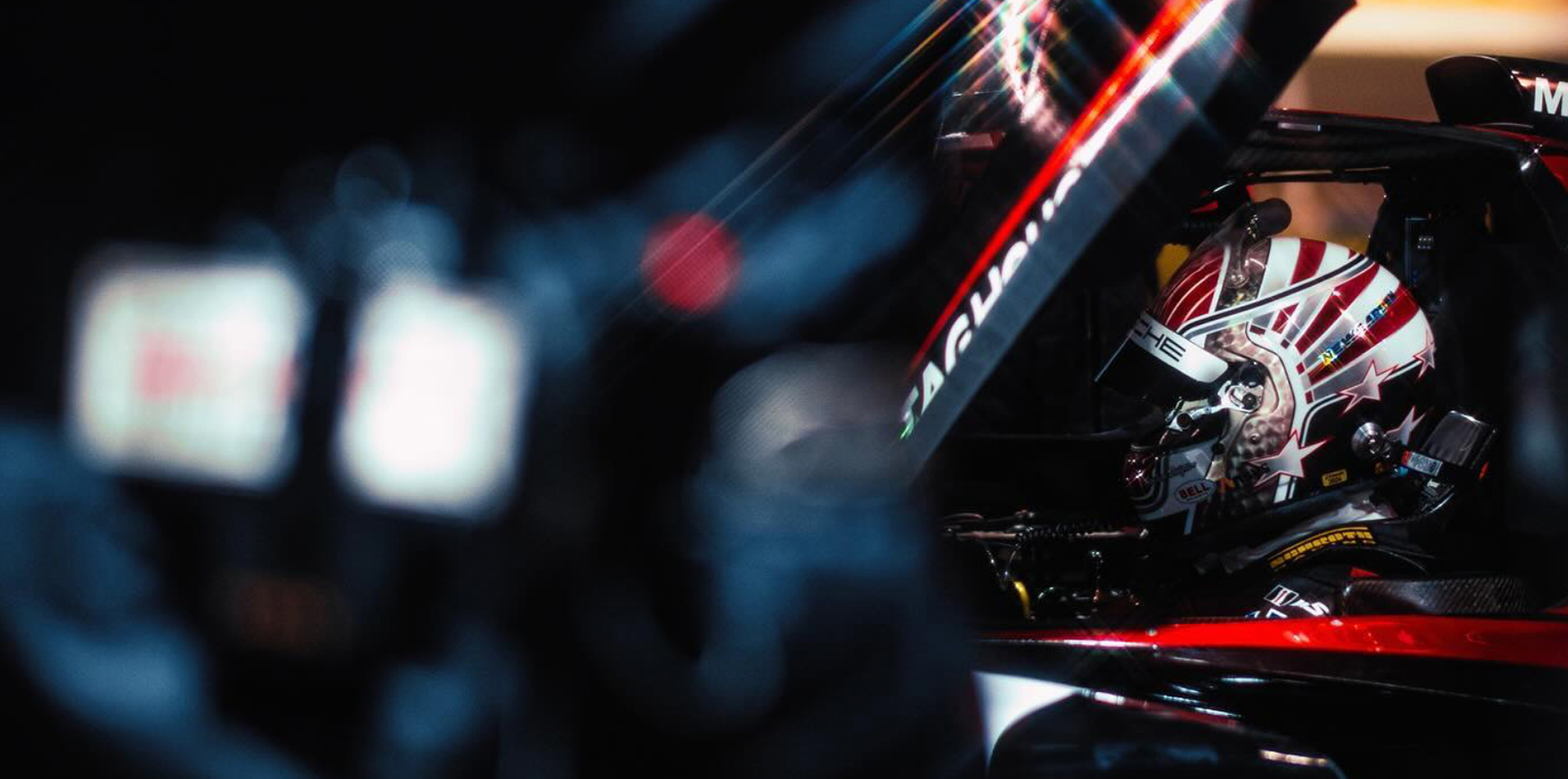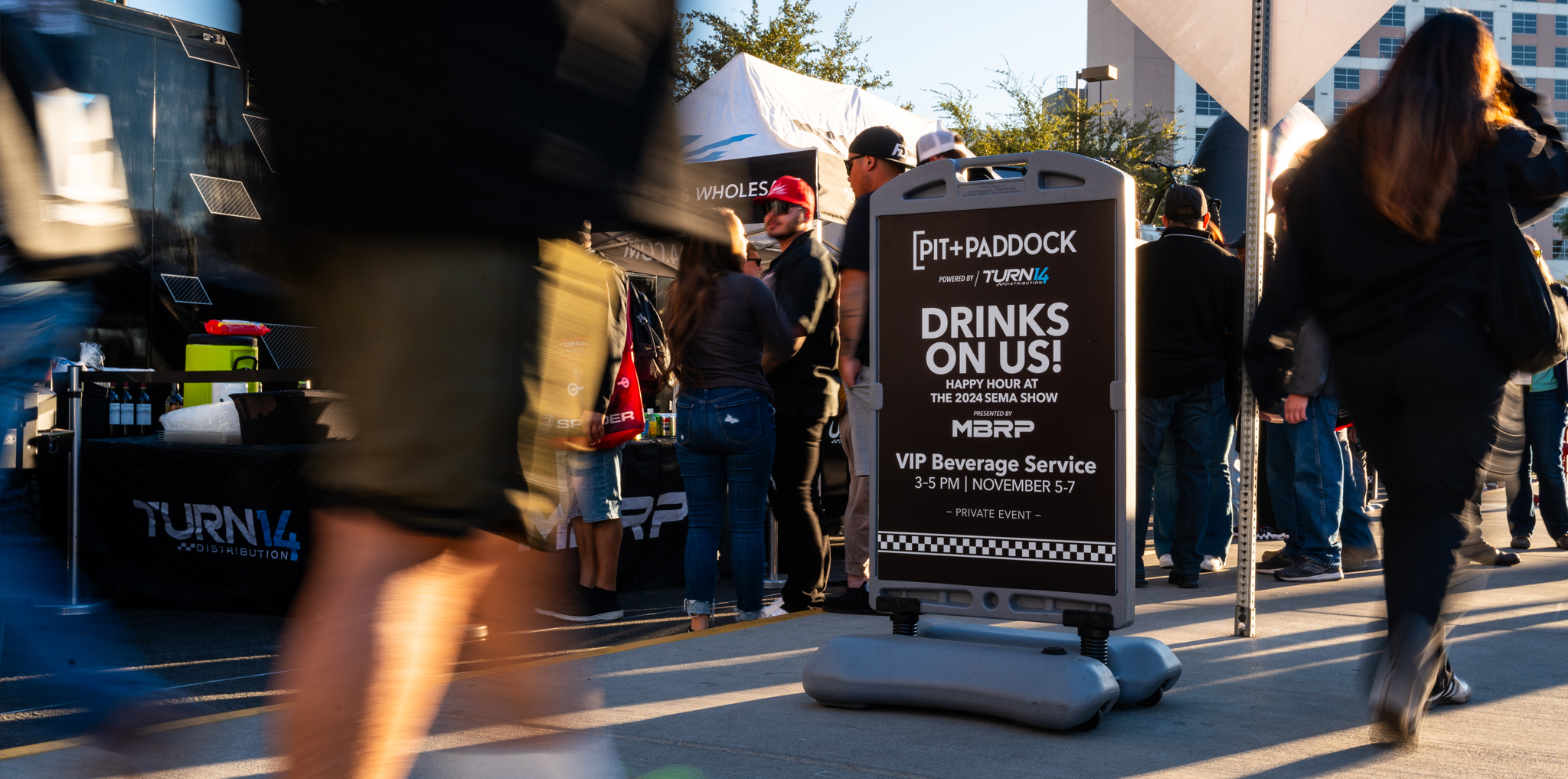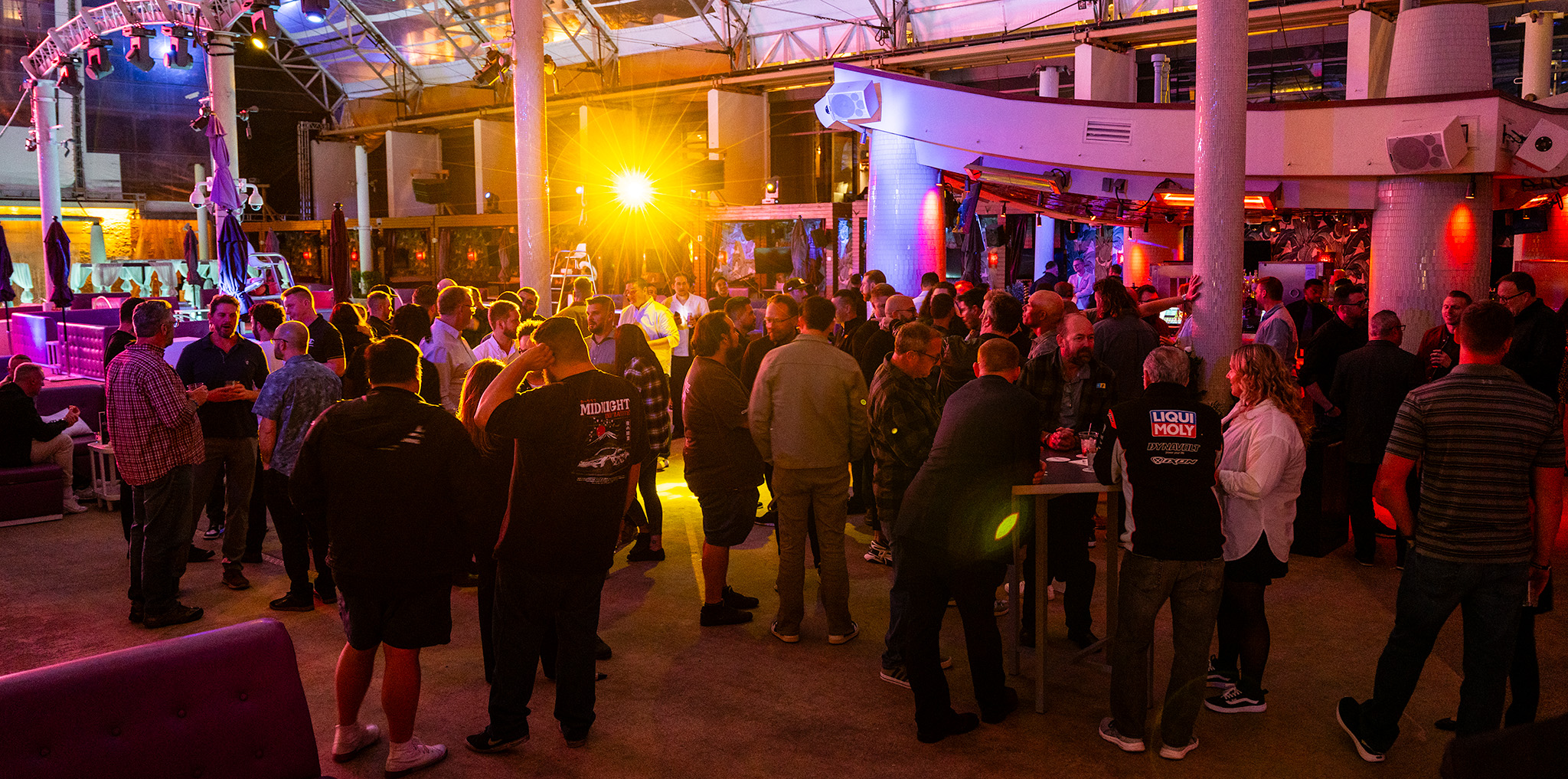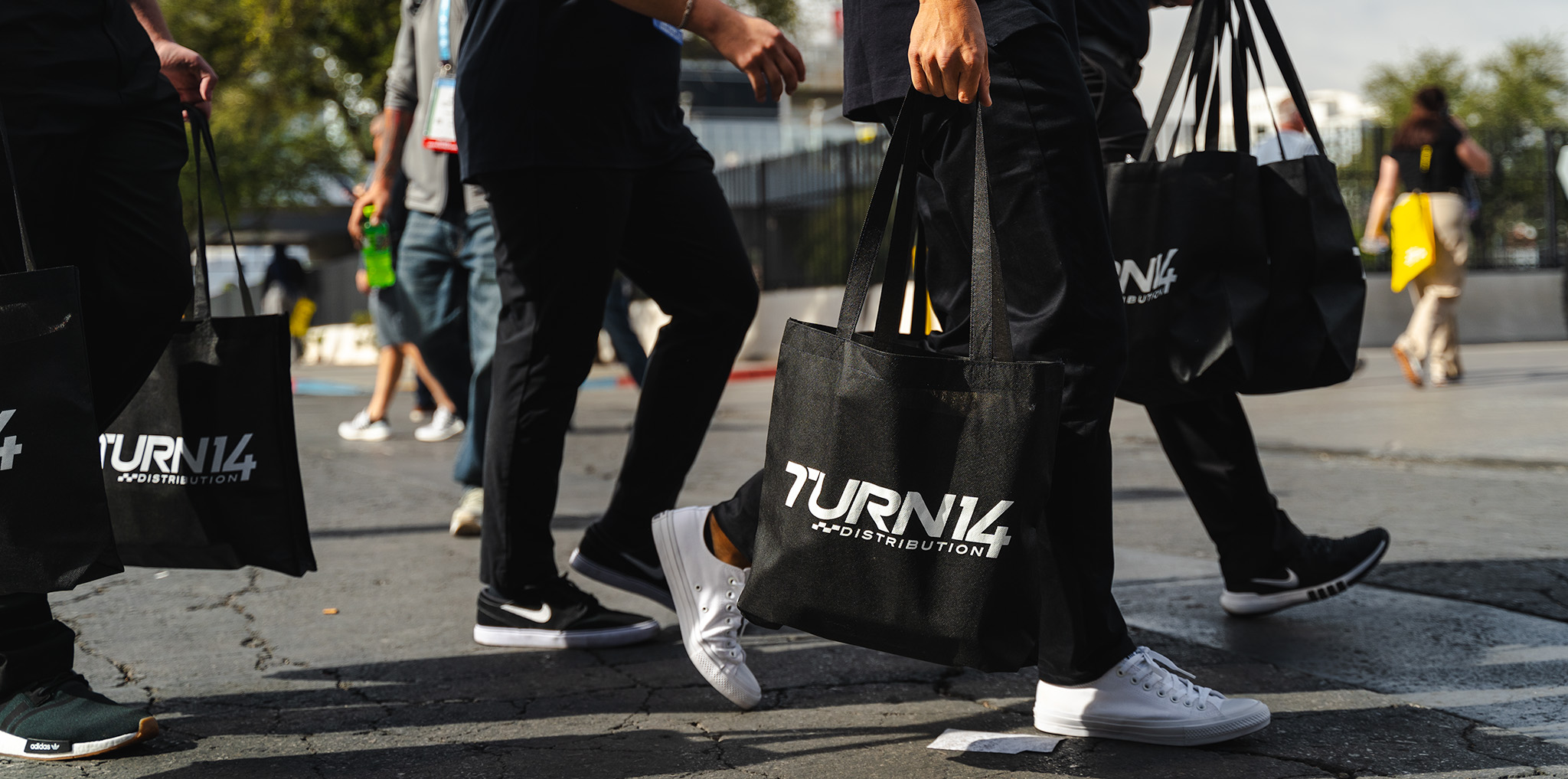In Focus: An Interview with Motorsport Photographer George Bucur Builds Anticipation for Next IMSA Round at Sebring
- Motorsport photography is one of the more competitive genres of the industry, especially as you ascend to the coveted ranks of IMSA or single-seater series like Formula 1.
- George Bucur has earned a seat among prestigious trackside shooters where he’s captured defining moments for equally respected race teams and drivers all over the world.
- Bucur’s talent has been critical to documenting Pit+Paddock’s motorsport journey as Montreal Motorsport Group’s (MMG) team photographer.
- With Round 2 at Sebring International Raceway just around the corner, we sat down with Bucur to get an inside perspective on his work, his inspirations, and working with MMG.
The beauty of automotive media is two-fold: one is where the journey can physically take you and the other is being able to immortalize pivotal moments—whether they are emotionally candid captures or slices of race action that allow thousands of race fans to experience the thrill by proxy.
That hunt is addicting, but at the top levels of racing, it’s a drug that few are privileged to experience. George Bucur, a well-recognized motorsport photographer and dedicated shooter for Montreal Motorsport Group (MMG), earned that benefit. Like many, motorsport photography was never part of an official plan—at least professionally. But the appeal was undeniable.
READY FOR WHATEVER HAPPENS
A critical part of this media genre is relinquishing control; it’s as far removed from an administered studio as you can get. The setting demands that you work within the confines it gives you. The circuit’s access, the light, and the on-track action are all variables that test whether you’re able to almost instinctually identify what the right place and time will be before moments happen. In that way, your head and whatever eye isn’t buried behind your viewfinder are in constant motion, surveying the landscape for the right shot and where you’ll need to be to get it. No two days, hours, or even minutes are guaranteed to be the same.
MORE THAN SPEED
I was introduced to Bucur through Montreal Motorsport Group. He, alongside Pierre Alexandre Guay, is responsible for capturing the team’s inaugural IMSA journey. But almost immediately, I got the sense that Bucur’s involvement with the team was a deep-rooted one. You could tell that the opportunity to document the inner workings of a professional race outfit as it gelled and left its stamp on North America’s premier motorsport series was a challenge that Bucur was eager to take on.
On debut at Daytona International Speedway, the team’s grit and determination were on full display. The #93 Pit+Paddock FL5 Civic Type R TCR, under Montreal Motorsport Group’s stewardship and Karl Wittmer’s guidance, qualified P2 for the Friday contest, with the sister car in P6. Thanks to a faulty radio, the race didn’t translate this pace into maximum points but the first effort still netted valuable tallies on the championship board. More than anyone on the grid, you could tell that the MMG squad has been waiting for Sebring to prove there’s even more in the tank.
CHALLENGE AHEAD
Sebring International Raceway is the second longest major road course in North America, spanning 3.74 miles and 17 turns in one lap. The track is most famous for its annual 12-hour enduro—which is part of IMSA’s WeatherTech Championship series—but race action on one of the most abrasive track surfaces is always an exciting watch. The Michelin Pilot Challenge race (officially known as the Alan Jay Automotive Network 120) is much shorter than the half-day main event—it’s two hours long—but that duration is still long enough to test the Pit+Paddock FL5 Civic Type R TCR’s longevity. Practice and qualifying sessions take place on Wednesday and Thursday, respectively, while the race is being streamed on Peacock Premium on Friday, March 15 from 3:15-5:15 PM EST.
INTERVIEW WITH GEORGE BUCUR
With the second round of IMSA’s Michelin Pilot Challenge on the horizon, we sat down with Bucur to gather insight into what brought him into the fast-paced world of motorsport photography, his influences, what it’s like working with Montreal Motorsport Group, and any advice he can pass along for young or aspiring shooters.
How did you get into photography? How many years did it take for you to “get there”?
My venture into photography all started with my childhood fascination with gadgets, especially cameras. I remember being awestruck by my dad’s Kodak 1MP digital camera—back when digital photography was still in its infancy. It was like having a piece of cutting-edge technology in my hands. I began snapping away eagerly, capturing moments and scenes whenever I got the chance. Initially, my focus was on photographing my collection of model cars, wanting to capture every intricate detail. But as time went on, my passion for photography grew beyond just models. I found myself drawn to the challenge of capturing real-life scenes, and I began frequenting local car dealerships to photograph the sleek machines on display. Then, in 2009, I took the plunge and invested in my first DSLR—a Canon 50D paired with a trusty 50mm f/1.8 lens. Armed with this new gear, I delved deeper into the world of photography, experimenting with different techniques and styles. By 2012, after years of honing my skills and building up my confidence, I decided to take the leap and turn my passion into a profession.
That’s relatable! Tell us about some of your biggest influences, especially when you first started shooting.
When it comes to influences, I’ve been fortunate to draw inspiration from some incredible talents in the field of automotive photography. Andrew Link, Jeremy Cliff, Easton Chang, and Webb Bland stand out as some of my biggest influences. Their distinct styles and unwavering passion for their craft have not only fueled my creativity but also instilled in me the belief that a career in automotive photography was within reach. What truly sets them apart is their mastery of lighting techniques, showcasing expert-level knowledge that continues to inspire and challenge me to push the boundaries of my work. Additionally, the works of Nick Busato, Jamey Price, Jordan Lenssen, and Vlad Rys have left an indelible mark on my approach to motorsport photography. Their breathtaking images not only capture the adrenaline-fueled moments of the track but also reflect a profound professionalism and dedication to their craft. In particular, Nick’s influence has been profound, shaping the way I approach my work and deliver results in the industry today. These photographers have not only influenced my style but also my mindset, driving me to continually strive for excellence in every aspect.
I know you have an immense portfolio, but do you have a favorite photograph to date?
One of my favorite photographs to date encapsulates a moment from the Spa 24-Hour in 2022. It was a defining moment for our team, as we found ourselves laboring late into the night, meticulously updating parts on the car in preparation for the upcoming practice and qualifying sessions. While other teams had long packed up and left, our garage remained illuminated, a beacon of determination and dedication. In that singular frame, I captured the essence of teamwork and perseverance, with every member of our crew united in their efforts to ensure our success on the track. It’s a snapshot that not only serves as a reminder of the challenges we overcame but also of the camaraderie and spirit that define our passion for motorsport.
Talk to us about your photography style. How did it develop and what have you learned along the way?
When it comes to my photography style, it’s all about capturing the intricacies and often overlooked details of racing. Racing isn’t just about speed; it’s an art form in itself, with every aspect deserving of attention. Over the years, my style has evolved through hands-on experience, particularly in racing series that are notorious for challenging lighting conditions, often in the harsh midday sun. Instead of fighting against these conditions, I’ve learned to embrace them, finding beauty in the stark contrast and strong shadows they create. Working with harsh light has taught me to focus on the highlights versus the shadows, using them to my advantage to craft more impactful images.
In commercial automotive photography, there’s often the luxury of extensive post-production to perfect images, but in motorsport, speed is of the essence. Clients expect rapid turnaround times, necessitating a meticulous approach to capturing the shot perfectly in-camera, with final touches reserved for subtle adjustments in post-production. Through this journey, I’ve learned that sometimes it’s not about ideal conditions but about making the most of what you have and finding beauty even in the most challenging of circumstances.
Lots of photographers aspire to shoot professional motorsport (myself included). What made you want to jump into that field specifically?
Entering the realm of professional motorsport photography wasn’t initially on my career radar. The field is undeniably competitive, especially as you ascend to higher echelons of racing series, where demand often outweighs supply. However, my passion for motorsport has been a driving force since long before I considered it a professional pursuit. The allure of being trackside, immersed in the adrenaline-fueled atmosphere of racing events, held an undeniable appeal—a dream job in itself. Once I delved into motorsport photography, I found myself utterly captivated, almost addicted to the rush it provided. Life took on a new vibrancy, fueled by the unpredictability and excitement of each race.
What draws me to this niche is not just the adrenaline, but also the structured rhythm of race weeks and days, steeped in tradition and protocol. There’s an electrifying energy in the air, with competitors pushing themselves to the limit and leaving it all on the track. Yet, amidst this structured framework, there’s always room for the unexpected—a breathtaking sunset casting a golden glow over the circuit or a sudden twist of events on the track. It’s this blend of tradition, competition, and unpredictability that keeps me hooked, ensuring that no two race days are ever the same.
That’s really well said. What has been the biggest challenge or roadblock shooting motorsport?
Shooting motorsport certainly comes with its share of challenges, and one of the biggest hurdles I’ve encountered during race weeks is the struggle to achieve comprehensive coverage while being in the right place at the right time. It’s a delicate balancing act, attempting to capture the essence of the race events and the people involved amidst the whirlwind of activity. The quest to maximize opportunities during the golden light hours adds another layer of complexity, requiring meticulous planning and swift execution to make the most of those fleeting moments. Compounding these challenges are series that schedule events during the harsh midday sun, presenting photographers with intensely contrasty light that can be unforgiving and challenging to work with. Navigating these obstacles requires adaptability, creativity, and a keen eye for timing—a constant juggling act that keeps me on my toes and continually pushes me to refine my skills as a motorsport photographer.
Like most photographers, there isn’t a lot about George. What’s something that you want us to know about you as an individual outside of your portfolio or the gram?
Cars have always been a major part of my life, from admiring their design to reveling in the thrill of high-speed racing. Photography has become my means of immersing myself in this world, allowing me to capture the essence of these machines and forge connections with fellow enthusiasts who share my passion. Beyond the lens and the track, music holds a special place in my heart. It’s more than just background noise—it’s an integral part of my daily life, providing solace and inspiration in equal measure.
You’re probably already an inspiration to younger audiences. Any advice for new shooters?
Focus on honing your craft and nurturing your love for photography, rather than fixating solely on financial gain. This approach not only fosters personal growth but also equips you with the skills needed to deliver exceptional work to clients efficiently. If you aspire to turn your passion into a profession, invest time in learning the business and networking aspects essential for success in today’s competitive landscape. Remember, authenticity is key—strive to create art that resonates with you rather than conforming to fleeting trends. Dedicate yourself to refining your skills, and trust that your unique style will naturally emerge over time. Seek inspiration from fellow artists and creatives, not to imitate but to glean insights that will help you carve your path in the world of photography.
Talk to us about what you’ve noticed about Montreal Motorsport Group—it’s gelling as a team, driver development, perception on the grid, etc—and what makes the team exciting to shoot with.
When it comes to the Montreal Motorsport Group, there’s a palpable sense of camaraderie and dedication that sets them apart. Having had the privilege of working alongside this exceptional group since 2019, I’ve witnessed firsthand their unwavering commitment to the motorsport ethos. For them, it’s not just about racing; it’s a relentless pursuit of excellence, evident in their meticulous approach to every aspect of their craft. From fine-tuning setups to chasing the perfect lap, their focus on performance is unwavering. Yet, amidst their competitive drive, there’s a genuine sense of unity and support that permeates the team dynamic. Shooting with the MMG isn’t just about capturing fast cars on the track; it’s about being part of a community that values and appreciates every contribution. Their dedication to the sport, coupled with their genuine camaraderie, makes them an exhilarating team to shoot with—one that embodies the true spirit of motorsport.
Talk to us about how you perceive Pit+Paddock and its unique position within the automotive industry as a magazine/agency.
Pit+Paddock has carved out a distinctive niche within the automotive industry, catching my attention notably through its E91 GTS Tribute build. As an owner of an E92 M3, I was naturally drawn to the project, and I must say, I was thoroughly impressed by the final result and the overarching vision behind it. It’s the kind of build that speaks volumes about the dedication and passion of true enthusiasts—a rare blend of uniqueness and tastefulness that sets it apart. In my eyes, Pit+Paddock isn’t just another magazine or agency; it’s a champion of car culture. Their projects, like the E91 GTS Tribute, resonate deeply with enthusiasts like myself, embodying the essence of automotive passion and creativity. Through their work, Pit+Paddock not only celebrates the diversity and vibrancy of car culture but also inspires others to push boundaries and pursue their automotive dreams.
Thank you, George, for taking the time to chat with us. We’re looking forward to seeing content from your time with the #93 Pit+Paddock FL5 Civic Type R TCR and Montreal Motorsport Group at Sebring very soon.
Thank you to ARP, ENEOS, Turn 14 Distribution, Mishimoto, Whiteline, and DBA for supporting Pit+Paddock’s inaugural IMSA Michelin Pilot Challenge campaign with Montreal Motorsport Group.













































































